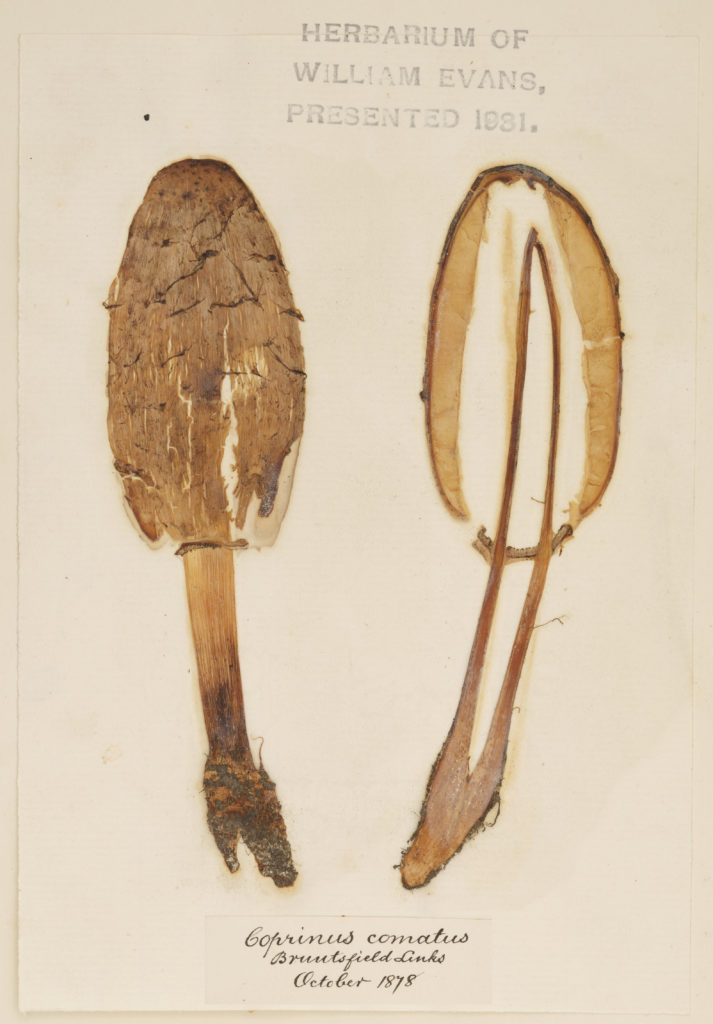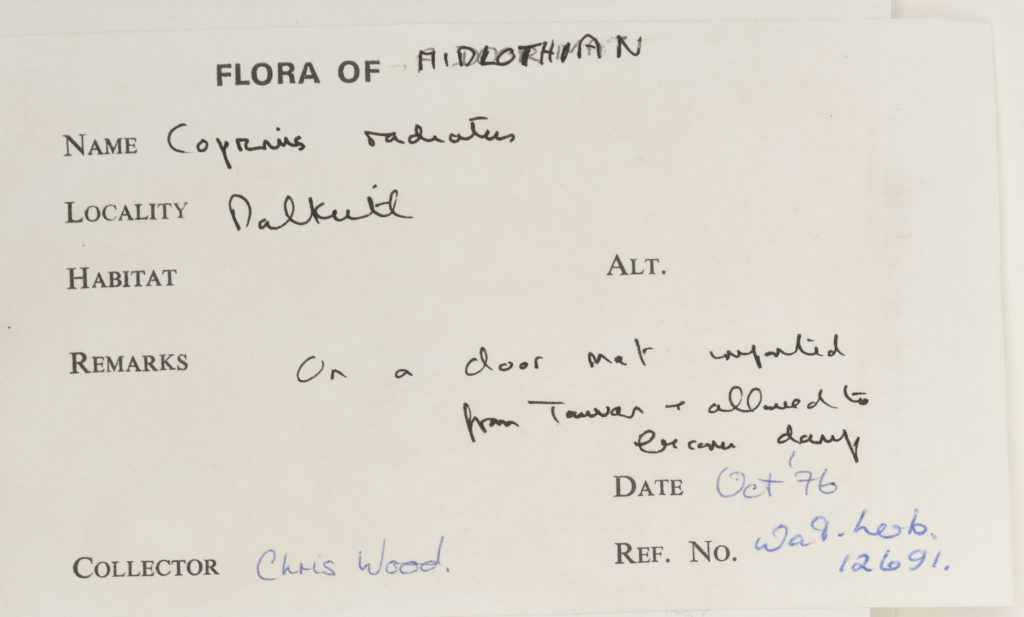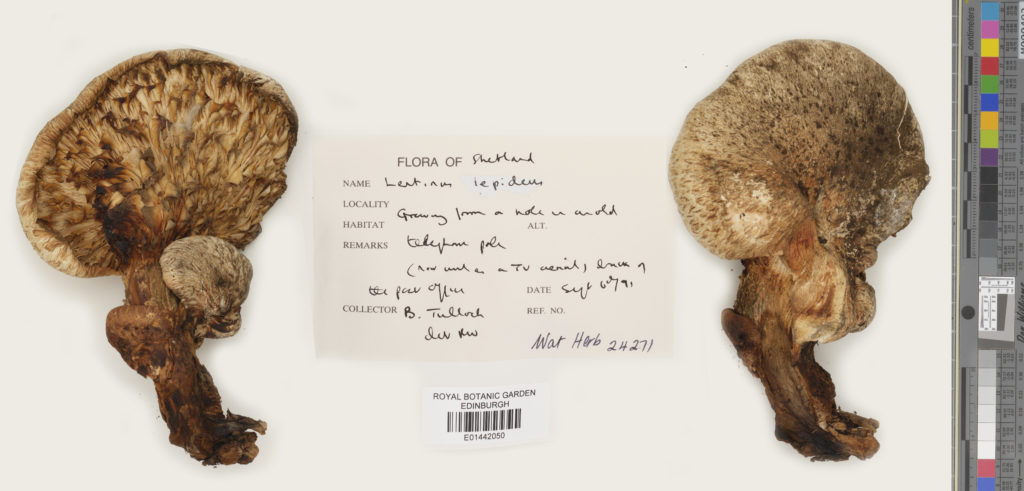The following blog was written by Chris Knowles a digitiser in the Herbarium.
Since 2021 we have increased our digitisation capacity with the goal of getting to 1 million specimens imaged by Autumn 2024. Chris is databasing our fungal collections.
Since starting work at the RBGE in 2022, I have been databasing the collection of dried fungi specimens in the herbarium, and this week marked a landmark point… as I finished the first aisle of specimens and gleefully embarked upon the next.
It has been really interesting working through the 308 genera from the 121 families I have completed so far (the British fungi collection is arranged alphabetically by genus, and I am halfway through species beginning with ‘P’), and there have been some wonderful surprises too.

As part of the digitising teams work, we check that specimens are filed away in the correct place by geographic region, which means quickly assessing each specimen label as it is encountered. The labels of the fungi also often include important information about the substrate that the fungus was found growing on, or in… and that is where I have noticed some of the more unusual label notes.
It is well known that mushrooms and other fungi can be found in almost every niche and habitat in the world, and it is no surprise to see many labels emblazoned with the words ‘manure’, ‘mixed dung’ or ‘heap of dung and straw’; but some of the substrates listed on labels were a bit closer to home…
So close in fact, that these substrates were actually part of people’s homes:
“Skirting Board”, “roof hatch”, “plasterboard wall”, “door mats from China”, “door mats from Taiwan”, “on ceiling of damp room”, “on piece of wood from leaky roof”.
While others were at least from the garden:
“On old sacking piled up against garden wall”, “inside wall of plastic dustbin on wet cardboard”, “bench”, “on the carpet of a Ford car”.

Some fungi had been found in more unexpected places:
“Chippings on Grave”
“Lining of old raincoat in Derbyshire”
and perhaps worryingly… “Fire” (Although there are several species of mushroom that specialise in breaking down previously burned wood and other charred, organic material in old fire pits, which is probably what was meant).
Others were subterranean:
“On pit props in Chatterley Whitfield Colliery, Tunstall”, “in an archaeological excavation at Vindolanda Roman Fort” and intriguingly a horse mushroom collected by Mordecai Cubitt Cooke from the “Cellar of House of Commons” in 1883.
I was particularly impressed though with some of the very specific substrates and locations given, which almost (but only almost), suggest it would be possible to go and track down those fungi again:
“In crack of clay pipe in rain water drain, Leith”,
“inside car on roof felt by the sunblind, above the windscreen, Austin Allegro, Bangor”,
“Growing on a wet ball of string which was tied to a clothes pole in community drying area, Edinburgh”,
and perhaps my very favourite of all… a Scaly Sawgill mushroom found “growing from a hole in an old telegraph pole (now under a TV aerial) at the back of the post office”, with no town, county or even country name given. So, with a few hundred more genera of British fungi to database next, I’m already intrigued to see where some of them were found.


Maura C Flannery
This was a wonderful post!!